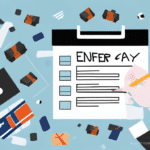Importance of Sales Promotions and Discounts in E-Commerce
As the e-commerce industry continues to expand, standing out in a crowded marketplace becomes increasingly challenging. Sales promotions and discounts serve as pivotal tools in enhancing visibility, driving sales, and fostering customer loyalty. According to a 2023 Statista report, global e-commerce sales are projected to surpass $6.5 trillion by 2024, underscoring the competitive nature of the market.
Promotions such as percentage discounts, coupon codes, and limited-time offers can entice customers to make purchases, especially during peak shopping seasons like Black Friday and Cyber Monday. Additionally, strategic discounts can help in clearing out seasonal inventory, making room for new products without significant losses.
It's essential for businesses to align their promotional strategies with their brand image. Luxury brands, for instance, may opt for exclusive offers to maintain their premium positioning, while value-oriented brands might leverage frequent discounts to attract price-sensitive consumers.
Common Challenges in Implementing Sales Promotions
While sales promotions are effective, their implementation is fraught with challenges. One primary issue is accurately tracking the Return on Investment (ROI) of each promotion. Without precise metrics, businesses struggle to determine the effectiveness of their campaigns.
Another challenge is selecting the appropriate promotion strategy that resonates with the target audience. A study by eMarketer highlights that mismatched promotions can lead to underwhelming sales outcomes and wasted marketing budgets.
Furthermore, maintaining a balance between offering attractive discounts and preserving profit margins is critical. Excessive discounts can erode profits, while insufficient incentives may fail to drive significant sales.
Selecting the Right Sales Promotion Strategy
Choosing the appropriate sales promotion strategy involves understanding your target audience and their purchasing behavior. Demographic insights, such as age, income level, and shopping preferences, play a crucial role in tailoring promotions effectively.
Types of Promotion Strategies
- Percentage-Back Discounts: Offering a certain percentage off the total purchase, encouraging higher order values.
- BOGO Offers: Buy-One-Get-One deals that can effectively clear inventory while providing value to customers.
- Free Shipping: Eliminating shipping costs can be a significant incentive, especially for online shoppers.
- Referral Discounts: Encouraging existing customers to refer new ones through exclusive discounts.
Timing is another critical factor. Aligning promotions with holidays, seasonal changes, or significant events can amplify their impact. For instance, offering back-to-school discounts can attract students and parents looking for deals during that period.
Creating and Executing Effective Discount Offers
Designing discount offers that resonate with customers requires a strategic approach:
- Create Urgency: Limited-time offers or flash sales can create a sense of urgency, prompting quicker purchase decisions.
- Personalize Discounts: Tailoring promotions based on customer behavior and preferences can enhance effectiveness.
- Clear Communication: Ensure that discount terms are straightforward and easily understood to avoid customer frustration.
Additionally, it's vital to assess the impact of discounts on brand perception. Overuse of discounts can lead to customers perceiving the brand as low-cost, potentially diminishing its value proposition. Balancing attractive offers with maintaining brand integrity is essential.
Measuring the Success of Sales Promotions
To optimize promotional strategies, businesses must rigorously measure their success using key performance indicators (KPIs). Common metrics include:
- Conversion Rates: The percentage of visitors who make a purchase as a result of the promotion.
- Average Order Value (AOV): Assessing whether promotions encourage customers to spend more per transaction.
- Revenue Generated: Total sales attributed to the promotion.
- Customer Acquisition Cost (CAC): Evaluating the cost-effectiveness of promotional campaigns in acquiring new customers.
Tools like Google Analytics and dedicated CRM systems can aid in tracking these metrics accurately. Continuous monitoring allows businesses to refine their strategies based on what works best.
Enhancing Customer Loyalty through Innovative Promotions
Beyond immediate sales boosts, promotions can play a significant role in building long-term customer loyalty. Implementing loyalty programs where customers earn points for purchases, which can later be redeemed for discounts or exclusive offers, fosters repeat business.
Innovative strategies such as gamification—where customers engage in games or challenges to win discounts—can also enhance engagement. Personalizing promotions based on past purchase behavior ensures that customers feel valued and understood, further strengthening loyalty.
According to a report by Forbes, businesses that invest in loyalty programs can see a 5-10% increase in revenue per customer, highlighting the substantial impact of these initiatives.
Leveraging Social Media and Competitor Analysis
Integrating social media into your sales promotion strategy can amplify reach and engagement. Platforms like Facebook, Instagram, and Twitter offer targeted advertising options, allowing businesses to tailor promotions to specific demographics.
Additionally, conducting competitor analysis helps in identifying industry trends and uncovering successful promotion tactics. Tools like SEMrush and Hootsuite can provide insights into competitors' promotional activities, enabling businesses to adjust their strategies accordingly.
Staying informed about competitors' approaches ensures that your promotions remain competitive and relevant in the dynamic e-commerce landscape.
Avoiding Common Mistakes in Sales Promotions
To maximize the effectiveness of sales promotions, it's crucial to avoid common pitfalls that can undermine their success:
- Over-Promotion: Excessive discounts can dilute brand value and erode profit margins.
- Misaligned Promotions: Failing to understand the target audience can lead to ineffective promotions that don't resonate.
- Poor Promotion Tracking: Without proper measurement, it's challenging to assess the success and ROI of promotional campaigns.
- Ineffective Communication: Promotions that are unclear or difficult to redeem can frustrate customers and deter purchases.
By being mindful of these mistakes, businesses can design more effective and sustainable promotional strategies that drive sales without compromising brand integrity or profitability.
Conclusion
Sales promotions and discounts are indispensable tools in the e-commerce arsenal, capable of driving sales, enhancing customer loyalty, and providing a competitive edge. However, their effectiveness hinges on strategic planning, accurate execution, and continuous measurement. By understanding the importance of promotions, overcoming implementation challenges, selecting the right strategies, and leveraging data-driven insights, e-commerce businesses can harness the full potential of sales promotions to achieve sustained growth and success.






















